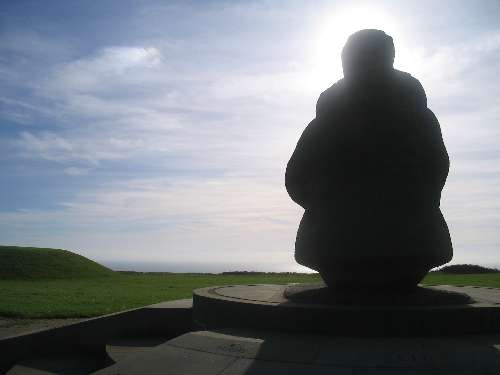So, Beyoncé’s song I Was Here, written by Dianne Warren in the aftermath of the 9/11 attacks on New York fifteen years ago…
The song has a circularity. Someone appears to be looking back on great achievements, while also feeling that their success lies somewhere in the future.
Perhaps the spirit of the song lies in that grammatically beguiling line “I did, I’ve done, everything that I wanted.” “I did, I’ve done” recurs throughout the song as a kind of chorus. I did and I’ve done are not two ways of saying the same thing. I did is the past perfect, used to talk about specific things in the past. “I did a number of great things.” A list of achievements could then follow, detailed on a CV. But “I have done” is a construction known as the present perfect, used to talk about experiences without saying precisely when they happened, or even what they were: “I have done some great things,” said with a faraway look in the eye. You get the sense that in summing up the significance of your life, any specific experience starts to become problematic. If you’re a singer like Beyoncé, do you point to some particular song you sang, even though songs become unfashionable, and some people don’t think pop songs are worth much anyway. Somehow, specific claims to fame fail to measure up. In their place comes a vaguer yearning for distinction. In fact, the idea of achievement becomes so vague that you get the line “I want to say that I lived each day until I die.” Well you could say everyone manages that. In place of the self-aggrandising song of a famous singer wallowing in their greatness you get a much more humane reflection on how relative the idea of achievement is. Even the humblest of people fulfil the hope of living each day until they die.
I Was Here is the song in which a celebrity culture reflected on itself and saw the bigger picture.
As a footnote, the music of I Was Here is in E minor, one of the most frequently used keys in pop music, since it suits the guitar very well. Building on this, the song uses a variation of one of the most familiar chord progressions in popular music, known as the 50s Progresson, so-called because it was widely used in the 1950s and 1960s. The 50s Progression is G-Em-C-D. The chord pattern for I Was Here is Em-C-D-Dsus-Em-C-Em-C. The suspended D chord, or Dsus, is another familiar feature of pop music. Technicalities aside, the point is I Was Here is quintessential pop music, using archetypal patterns familiar to everyone. If there is something special here, it is a quality of the widest range.
(Thanks to Rob for recommending this song to me)
I wanna leave my footprint on the sands of timeKnow there was something that,
Meant something that I left behind
When I leave this world, I’ll leave no regrets,
Leave something to remember, so they won’t forget
I was here
I lived, I loved
I was here
I did, I’ve done, everything that I wanted
And it was more than I thought it would be
I will leave my mark so everyone will know
I was here
I want to say I lived each day, until I die
And know that I meant something in somebody’s life
The hearts I have touched will be the proof that I leave
That I made a difference, and this world will see
I was here
I lived, I loved
I was here
I did, I’ve done, everything that I wanted
And it was more than I thought it would be
I will leave my mark so everyone will know
I was here
I lived, I loved
I was here
I did, I’ve done, everything that I wanted
And it was more than I thought it would be
I will leave my mark so everyone will know
I was here
I just want them to know
That I gave my all, did my best
Brought someone to happiness
Left this world a little better just because
I was here
I was here
I lived, I loved
I was here
I did, I’ve done, everything that I wanted
And it was more than I thought it would be
I will leave my mark so everyone will know
I was here.
I lived
(I loved), I was here
(I did), I did
(I’ve done), I was here
(I lived), I lived
(I loved)
I was here
I did
(I’ve done)
I was here
Written by Diane Eve Warren • Copyright © BMG Rights Management US, LLC, DO Write Music LLC, Downtown Music Publishing LLC


